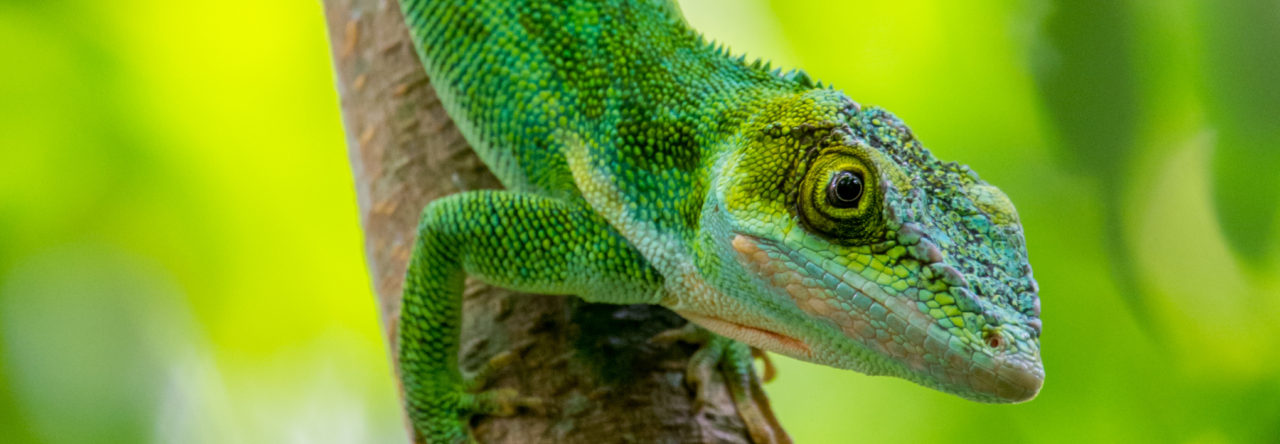Most arboreal anoles are green, and for a good reason: it’s hard to pick out a green lizard amidst green vegetation. Yet, some species are more subdued in their coloration, with browns or grays–e.g., Anolis luteogularis from Cuba or Anolis microtus from Costa Rica.
An interesting twist is provided by Cuvier’s anole, the crown-giant of Puerto Rico, in which a polymorphism exists in which most lizards are green, but some are brown-grey. We were reminded of this situation by Alejandro Sanchez, who sent the photo displayed above with the comment that it had been a long time since he’d seen one of these morphs. Contrast that with his spectacular photo of the more common green morph below.
Rivero in his epic Los Anfibios y Reptiles de Puerto Rico notes the polymorphism, but does not provide any explanation or discussion, and I am unaware of any other literature on this subject. Puerto Rican readers out there: what else do we know? Are they definitely different morphs? Someone once whispered in my ear he had seen brown ones turn green, but the only publication of which I’m aware to discuss this phenomenon, Rand and Andrews (1975), says they don’t. But that was based on a very small sample size. Does the gray/brown morph occur throughout the island? Any idea what it’s all about? Any difference in habitat use? As far as I’m aware, the adaptive significance of this polymorphism has never been studied.
- Evolution in Real Time on Lizard Island - March 23, 2025
- Spider Snags Adult Anolis osa - March 22, 2025
- An Homage to the Green Anoles of New Orleans - March 21, 2025




Liam Revell
I don’t think the grey ones turn green; but there are surely folks who could definitively address this. Juveniles are a (much brighter) shade of grey as well, & then (generally) turn bright green as they mature. The grey morph adults are a much duller shade, as shown in your picture and in this photo of a grey morph from a recent field trip.
Also, here is a picture of a bright grey subadult A. cuvieri sleeping. This photo is courtesy my Ph.D. student, Kristin.
Also
Kuti Ra
What does it look like when the regular cuvieri turn brown?
Ambika Kamath
Here’s a green cuvieri that’s almost turned brown.
Kristin Winchell
I’ve seen the brown/gray ones at Mata de Platano and also in the forest near Mayaguez, but I was told by a graduate student at UPR that the gray morph is very rare. I’ve never seen the gray ones turn green, they just turn darker brown, but the gray ones did have small amounts of green on them. Here’s both morphs side by side from Mayaguez, both large adult males.
Ricardo Valentin
About a year ago I photographed a brown A. curvieri near the center of the Rio Abajo Forest in Arecibo. The color was so dark that in the subdued light of the understory it looked like it was black. It was eating a taratula, a very unusual sight in itself.
Jonathan Losos
I’d love to see a photo of that!